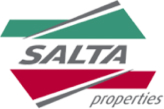Where did we start and where are we going?
Archaeological Excavations was created by Adam Deane, who began his journey in archaeology through happenstance in 2005 as a machine operator on an archaeological site in North Melbourne. Through working alongside the community, Adam developed a keen interest in Australia’s Indigenous past and future and saw areas of opportunity for improvement. From there, the seeds of Archaeological Excavations had been planted.
Adam officially registered the company in July 2010. At that stage, Archaeological Excavations comprised one employee and one machine. Adam worked tirelessly, driven by his passion to improve the protection and preservation of Indigenous archaeology, spending his first few months hand building some of the company’s first mechanical sieves to improve excavation methods.
After hiring a core team of decorated archaeologists, Archaeological Excavations began working on some of the most significant projects in Victoria. One such example is the salvage at Lyndhurst, where the company, in collaboration with community, made the decision to continue excavation below what was at the time considered ‘basement’. As a result, some of Victoria’s oldest evidence of human occupation, dating to the Pleistocene ice age (approximately 35,000 years BP), were recovered. These artefacts have contributed to our understanding of the extent of Victoria’s Indigenous occupation.
Through passion, hard work and strong community relationships, Archaeological Excavations has flourished into a dedicated team of archaeologists, anthropologists, GIS specialists and operators with a fleet of machines and interstate projects. The team works closely alongside each other, even is separated by thousands of kilometers between projects, to ensure that we deliver results.
So where are we going from here? We aim to lead the way in modern archaeological services. Archaeological Excavations continues to seek out ways to improve and streamline archaeological excavation in order to deliver outstanding results to our clients and community. As a company, we strive to do the ground-breaking. We are incorporating new methods of site detection, including the use of remote sensing through drone survey, LiDAR and ground penetrating radar (GPR) as well as utilising 3D photogrammetry. We will continue to seek out the new and improved.
The pioneering spirit of innovation and progress is ingrained into our company’s ethos. Contact one of our staff members today to see how we can help manage your complex methodological, legislative and consultive requirements for Aboriginal and historical compliance across Australia.
Vision:
To be the industry leader in assisting with the protection, preservation, and celebration of Australia heritage
Mission:
To discover, develop, and deliver innovative heritage management solutions by linking industry, government, and community.
Values
Respect, always
- For each other
- For our clients
- For our RAPs and TOs
- For the heritage we are entrusted to uncover and interpret
Integrity
- Doing what is right, even when no one else is.
- Meaning what we say and saying what we mean
- Being responsible professionals
Open Communication
- With each other
- With our clients
- With our RAPs and Tos
Educate
- Each other
- Our clients
- For the heritage we are entrusted to uncover and interpret
Details, details, details
- On-site
- In reports
- With clients and their needs
Being solution finders
- Thinking laterally and creatively
- Knowing there is no one way to solve a problem
- Being open-minded and collaborative to fix the issue
Projects
Lyndhurst
The project involved an inland port at Lyndhurst as proposed by Salta Properties. The development would bring freight from Melbourne Harbour by rail to Lyndhurst where it would then be dispatched to trucks. The project aims to solve the issue of inner-city traffic congestion and provide greater opportunities for imports and exports in the southeast of Melbourne as it provides an alternative to road-based container transfer.
Drysdale Bypass
Drysdale Bypass is Bellarine Peninsula’s biggest road infrastructure project. Running 6 km from Jetty Road to the north of Whitcombes Road, the project involved the construction of four new traffic lanes separated by a central median, along with the construction of intersections, roundabouts and traffic lights.










